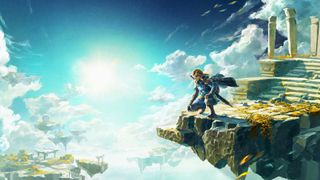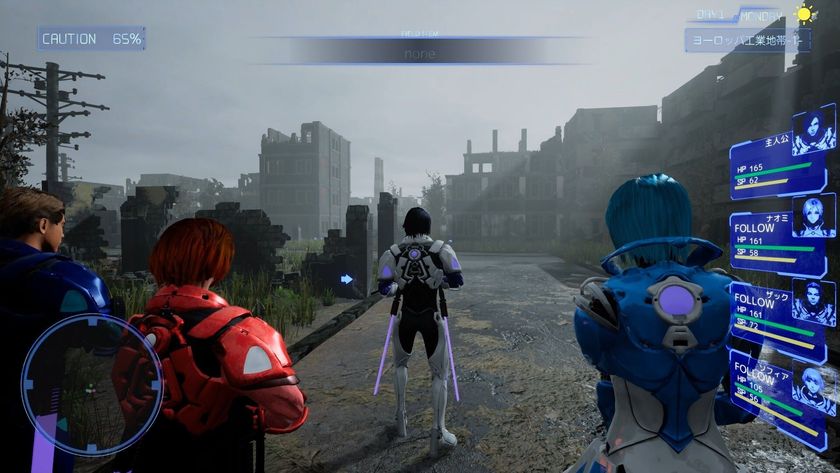Pokemon Scarlet and Violet technical woes have left me worried about Zelda: Tears of the Kingdom
Can the aging Switch really offer a blockbuster sequel?
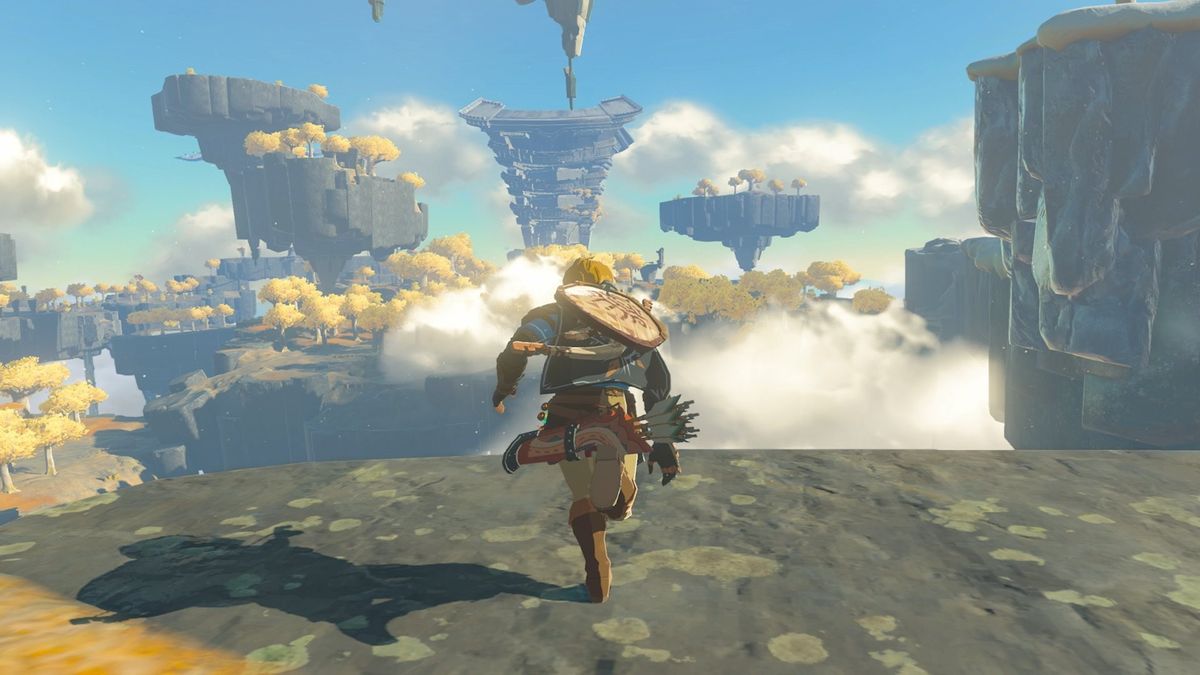
Pokemon Scarlet and Violet did what I didn’t think possible – make me worried about the quality of an incoming Zelda game. From what we've seen, Zelda: Tears of the Kingdom looks great, but can the aging Switch really deliver a blockbuster sequel? I love the best Zelda games – having kicked off the obsession in my youth with a double-bill release of Wind Waker and Ocarina of Time on the GameCube, Phantom Hourglass on the Nintendo DS, and moving steadily through the more recent entries like 2017’s stellar Breath of the Wild. But the latest mainline games in the Pokemon franchise have me concerned about what BOTW’s long-awaited sequel will be like to play on the Nintendo Switch’s aging hardware.
Breath of the Wild was an astonishing achievement, utilizing a relatively underpowered Switch processor – compared to the last-gen PlayStation and Xbox consoles, let alone their newer PS5 and Xbox Series X counterparts – and pushing it for all it was worth. This was a game with stunning open-world vistas, dynamic graphics, and blisteringly fun exploration across towering mountains, underground puzzle dungeons, and everything in between.
It’s odd, then, that a Pokemon game five years later falls so short of that kind of technical accomplishment. Developers tend to gain mastery with a console’s toolbox as time goes on, learning how to best utilize its particular programming and capabilities. But Pokemon Scarlet and Violet can be a shocking eyesore, with glitching lighting effects, unstable textures, and small Pokemon lost in the game’s underwhelming battle cam.
Hold your Breath
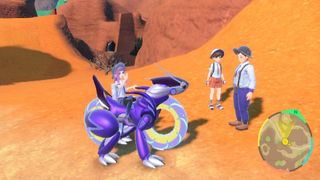
Even the Nintendo Switch OLED’s vivid 7-inch screen is unable to save the visuals, where Pokemon or trainers are rendered suddenly as you approach, or at an abysmal frame rate at a further distance. This is not a fast-moving game, and yet it struggles to power even the slow stroll of pedestrians walking through their thinly-detailed towns. In our Pokemon Scarlet and Violet review, we wrote that “Crashes forced me to restart, lag and slowdown was frequent, pop-in was a constant bugbear, the loading times were testing, textures looked unimpressive up close, sprites don't appear until you're practically standing on them, and the game cuts frames of animation on anything too that's too tough for the hardware – like a single, slowly-turning windmill or several people sitting calmly in a classroom.”
This is a far cry from the visual dynamism of Breath of the Wild, a game almost six years old, and it’s hard to justify the discrepancy. Admittedly, it looks like devs at Game Freak had a little less time to bring their game to fruition. The last Pokemon game was Legend of Arceus, which landed in early 2022. It hasn’t even been a full year since then, and the lack of polish is everywhere you look in Scarlet and Violet’s similarly open-world terrain. While Legend of Arceus was innovative in many ways – taking the focus away from gyms and towards freeform exploration, as well as tracking large-scale Titan Pokemon – Scarlet and Violet released simply too soon to learn anything from those experiments, or implement the next evolution of Pokemon gameplay in a meaningful way.
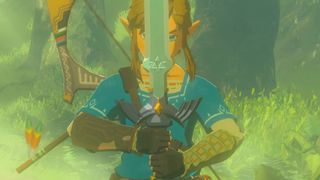
"But when flagship titles like Pokemon Scarlet and Violet drop the ball, it doesn’t inspire confidence in Nintendo’s ability to go bigger and better on increasingly insufficient hardware."
As with so many flagship franchises – not least, say, Call of Duty and Assassin’s Creed – getting new blockbuster games out the door swiftly can be more important to a company’s leadership than finishing to a sufficient standard, or making the new entry worth the effort. The game suffers, and players slowly lose trust in a franchise’s ability to meet expectations. Thankfully, The Legend of Zelda games don’t usually follow this trend. Flagship Zelda titles spend years in the making, intended to offer a console-defining experience – hence why new Nintendo hardware usually launches with a Zelda game, and why there’s so much fanfare around a new release in the series.
But Breath of the Wild launched almost six years ago, and feels like it already offered peak performance for the Nintendo Switch’s processor. It’s hard to imagine a 2023 sequel doing much better, running on the same machine, with little-to-no improvement on the base hardware. The newer Switch OLED may elevate the visuals, but can’t improve the game’s ability to render assets and effects – and with no 4K-capable Switch Pro confirmed on the horizon, this doesn’t look set to change in the near future. And if an upgraded Switch does release shortly after Tears of the Kingdom, that’s frustrating in its own right, with early adopters punished for their desire to play the new game at launch, when an improved experience was right around the corner. So far, new Switch hardware has dropped every two years (2017, 2019, 2021) and an upgraded Switch could well be on the cards before 2023 is out.
Sign up to the 12DOVE Newsletter
Weekly digests, tales from the communities you love, and more
Obviously, there’s more to a Zelda game than its graphics – and a medley of new mechanics, gripping story hooks, and expertly-designed puzzles would still make Tears of the Kingdom a worthwhile entry, even if it cleaves relatively close to Breath of the Wild’s winning formula, with the same level of graphical fidelity. But when flagship titles like Pokemon Scarlet and Violet drop the ball, it doesn’t inspire confidence in Nintendo’s ability to go bigger and better on increasingly insufficient hardware.
Go exploring with the best games like Zelda

Henry St Leger is a freelance technology and entertainment reporter with bylines for The Times, GamesRadar, IGN, Edge, and Nintendo Life. He's a former staffer at our sister site TechRadar, where he worked as the News & Features Editor, and he writes regularly about streaming, games, D&D, and a host of home technologies including smart speakers and TVs. He lives in London with his Nintendo Switch (OLED) and spouse (not OLED).
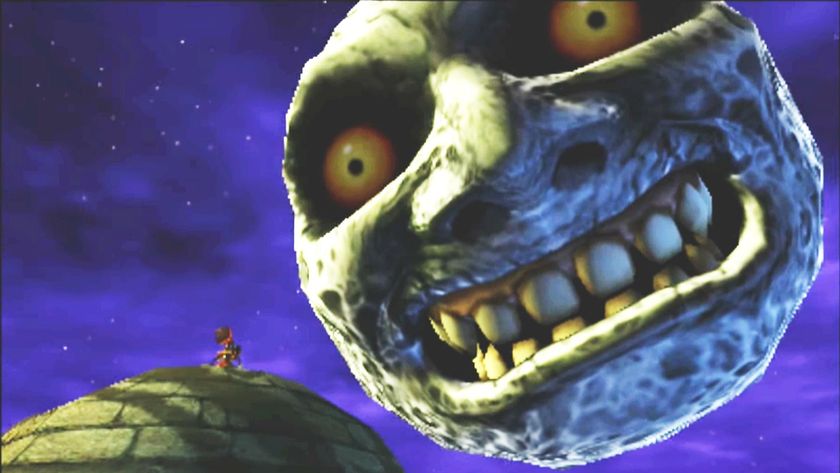
Despite Zelda: Majora's Mask basically being a horror game, one of its key devs didn't think its creepiest features were scary at all: "People on the team were like 'whoa!'"
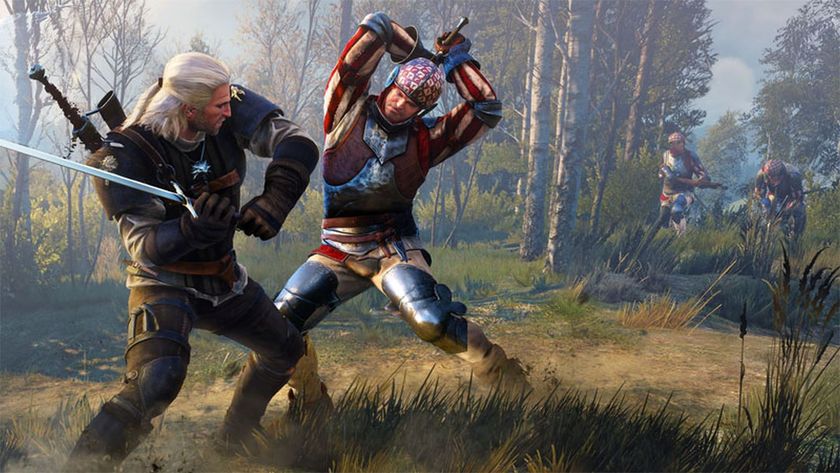
Zelda and Star Fox legend Takaya Imamura would "love" to make a Star Wars game with The Witcher 3's CD Projekt Red – and now I'm desperate to make it happen
Most Popular






